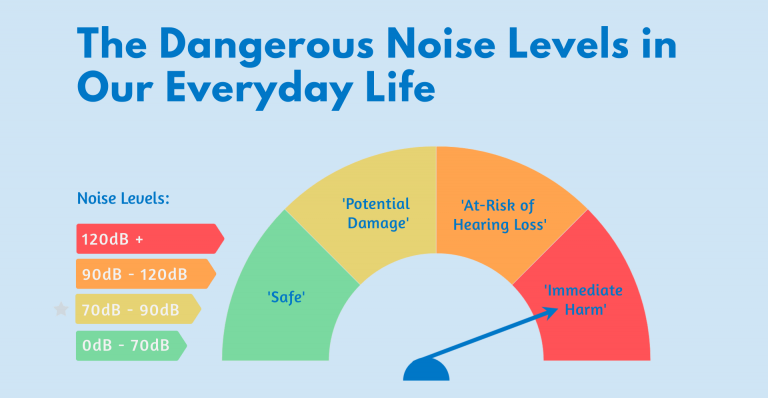
There is a substantial lack of information and ignorance surrounding the dangers of everyday noise exposure and the long-term damage it is causing us. The WHO (World Health Organisation) suggests that more than 43 million young people between the ages of 12 – 35 live with disabling hearing loss, with the majority of people unaware that they even experience any hearing difficulties.
It is estimated that 50% of headphone users expose themselves to unsafe noise levels on their own personal devices. With 40% of young people regularly exposing themselves to noises that can cause potential long-term hearing loss – such as attending club events, parties and concerts.
We wanted to create a more transparent picture of the noise levels that we encounter in our day-to-day that could potentially damage our ears, and even make us go deaf. With noises such as vacuum cleaners, heavy traffic and busy restaurants all causing more damage to our hearing than we may realise, it’s important to highlight the potentially damaging everyday noises that we should be using hearing protection to protect ourselves from.
Simply put, we have thousands of tiny hair cells in our ears that can sense the movement caused by soundwaves and catch and carry the sound to the auditory nerve – which then signals to our brain to make sense of what we’re hearing.
When exposed to loud noise, these hair cells can break pretty easily. This is why you can experience temporary deafness after attending a concert or mowing the lawn, because of the extremely high dB sound breaking the tip links of our hair cells.
Although hair cells are delicate, their tip links can regenerate and hair cell function can return to normal. However, because of the lifestyle we live with such loud things incorporated into our everyday lives, hearing loss is inevitable for the majority of people and will happen gradually over an individual’s lifetime.
It’s a given that you have to raise your voice around elderly people as unfortunately, hearing loss is a natural and inevitable part of life for most people. Our ears are gradually damaged over the years as a result of exposure to noise throughout our lifetime. But, how we protect our ears when we’re young, and which noises we are exposed to most frequently, can dramatically affect the extent of hearing loss with old age.

Noise volumes in this bracket are the safest for our ears and don’t put you at risk of hearing loss, no matter how long you are exposed to the noise. Because of their lower volume, if you do suffer a loss of hearing these will be the noises that you find yourself struggling to hear – particularly in the 0-30dB range.
For noises above 70dB, you begin to risk damage to your hearing if you listen for prolonged amounts of time. For example, if you work in a busy restaurant full-time then the noise level is enough to damage your hearing over time and earplugs would be advisory.
90 – 120dB ‘At-Risk of Hearing Loss’
Prolonged exposure to noise above 90dB puts you at a real risk of hearing loss as a result of permanent damage to your ears. If you regularly use a motorcycle or factory machinery in your job, then you could be causing irreparable damage to your hearing without proper safety protection equipment.
Sounds above 120dB put your ears in immediate danger, and as little as one minute of exposure is enough to cause damage. If you have prolonged exposure to these noise levels then you are likely to suffer temporary hearing loss and a gradual loss of hearing over time, which the possibility of extreme hearing loss and essential use of hearing aids in the future.
Rock concerts and nightclubs are both in this category of extreme noise levels, meaning regular attendees are at a real risk of permanent hearing loss. To prevent any damage to their hearing that could result in deafness to any degree, attendees must wear ear protection such as earplugs when at events.